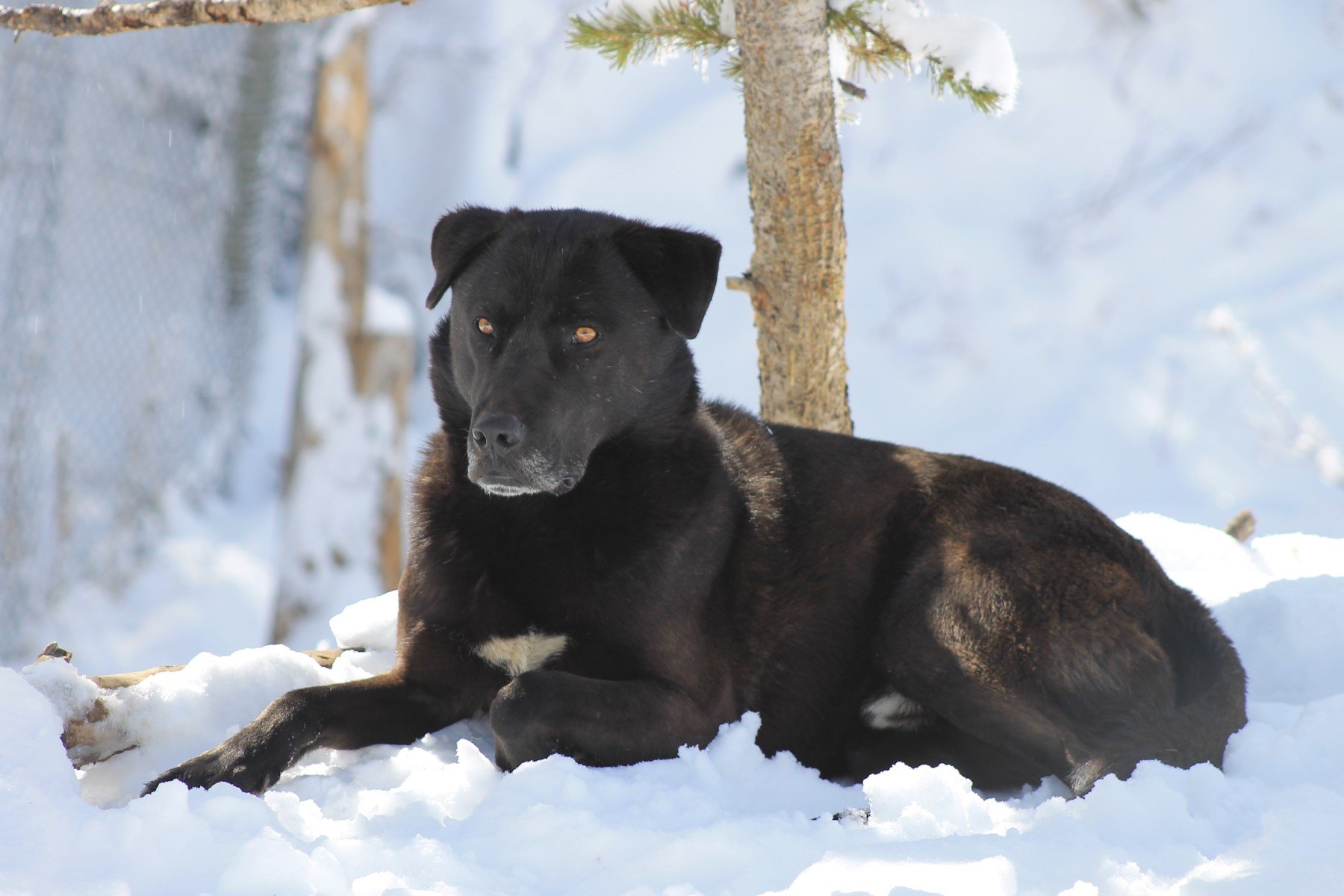Wolf-Dog Genetics
Abraham came to our sanctuary as a pup and physically looked to be a very high content wolf-dog. However, in time he grew into his big paws and exhibited more dog characteristics than wolf. Wolf-dog genetics are hard to predict.
Wolf-Dog Genetics
If you do make the decision to bring a wolf-dog pup into your life, you will probably look at that cute pup or yearling and wonder to yourself what they will look and act like when they get older; at least, you should. You are dealing with the unpredictable roller coaster of genetics, which can vary wildly depending on how the two parental sets of DNA combine.
Geneticists figured out early on that, while an individual may posses the same genetic material as a litter mate (geneticists call this the genotype), it doesn’t necessarily mean that the two individuals will express those genes in the same way — in how they look or act (called the phenotype).
As a result, differences in coat color, attitudes toward people, and intensity of personality can be dramatic, even in related offspring. That pup you are looking at may grow up to be an animal who looks like a wolf, but acts like a dog. This is the most sought-after product in any wolf-dog; these animals are more likely to respond to some training and be less shy around strangers — they are generally the most expensive pups of the litter and the quickest to sell.
Asia is likely a pit bull/wolf cross, and she fears most strangers.
However, regardless of the characteristics of their litter mates, your pup may grow up to be an animal who looks like a wolf and acts like a wolf. It is impossible to tell early on what a wolf-dog pup will grow up to be. Again, these animals are not domestic dogs. The first 6-9 months of their lives are the most important. This is when many, if not all, of their life-long bonds between pack-mates are established. After a time (and again, this varies between animals), they are less likely to come up to people they do not already know. If the animal is one of the more timid/shy personality types, it may begin to withdraw from those they do know. This becomes hard for owners who wish to be close to their animal.
All too often, through repeated attempts to have contact, owners end up violating the animal’s space without realizing it. The animal, in turn, becomes even more withdrawn. When these animals are then resold or given to the next well-intentioned and unknowing owner, life for that animal generally gets worse. Desiring nothing other than returning to their family, home, and territory, they can be a challenge to keep confined to their new quarters. Wolves evolved as a species capable of traveling, even requiring, vast amounts of space in which to roam and wander at will. Alone, in a fenced box in a strange backyard, is an extreme that wolves and ‘wolfy’ wolf-dogs do not handle well at all.
There is another possible phenotype you may end up with, which is usually the most disappointing for new owners. This is the animal that looks mostly like a domestic dog with some wolf traits (i.e. eyes, lengths of limbs, overall size and weight), but whose personality is not that of a domesticated pet. Sometimes shy and testy, these wolf-dogs that look like dogs and act like wolves can fool a stranger into thinking that they are the normal, run-of-the-mill lapdog until it is too late.
These animals commonly possess an incredible ability to jump high fences and roam around the area, doing things that come innately to the canid species. They can be a huge challenge to handle for the reason that, neither wolf nor dog but somewhere in between, they are less predictable than either parent. Sometimes, they may respond to you or act towards you as you would expect a dog to act. At other times, they may treat you as another wolf. Figuring out how to communicate with an animal like this can occasionally result in mistaken intentions, reprimands, and bites. Their dog-like lack of fear for humans, combined with the subtle communications and strength of a wolf, can have serious consequences. More often than not, it is the animal who suffers.
While Batman is Asia’s brother, his cool and calm personality is markedly different. Photo by Laura McGehee.
When you boil all of this down, you end up with one conclusion: There is just no telling what that cute little puppy will grow up to be. Regardless of what the breeder claims, there is no way to know what lies beneath the surface. Many breeders and sellers will misrepresent the percentages of their animals in order to do business legally, or to get a higher price. Even if the seller believes that they are telling you the truth about your puppy’s genetics, the basic principles of biology can easily make liars out of us all.
Many thanks to Annie White for her contributions to this page.


